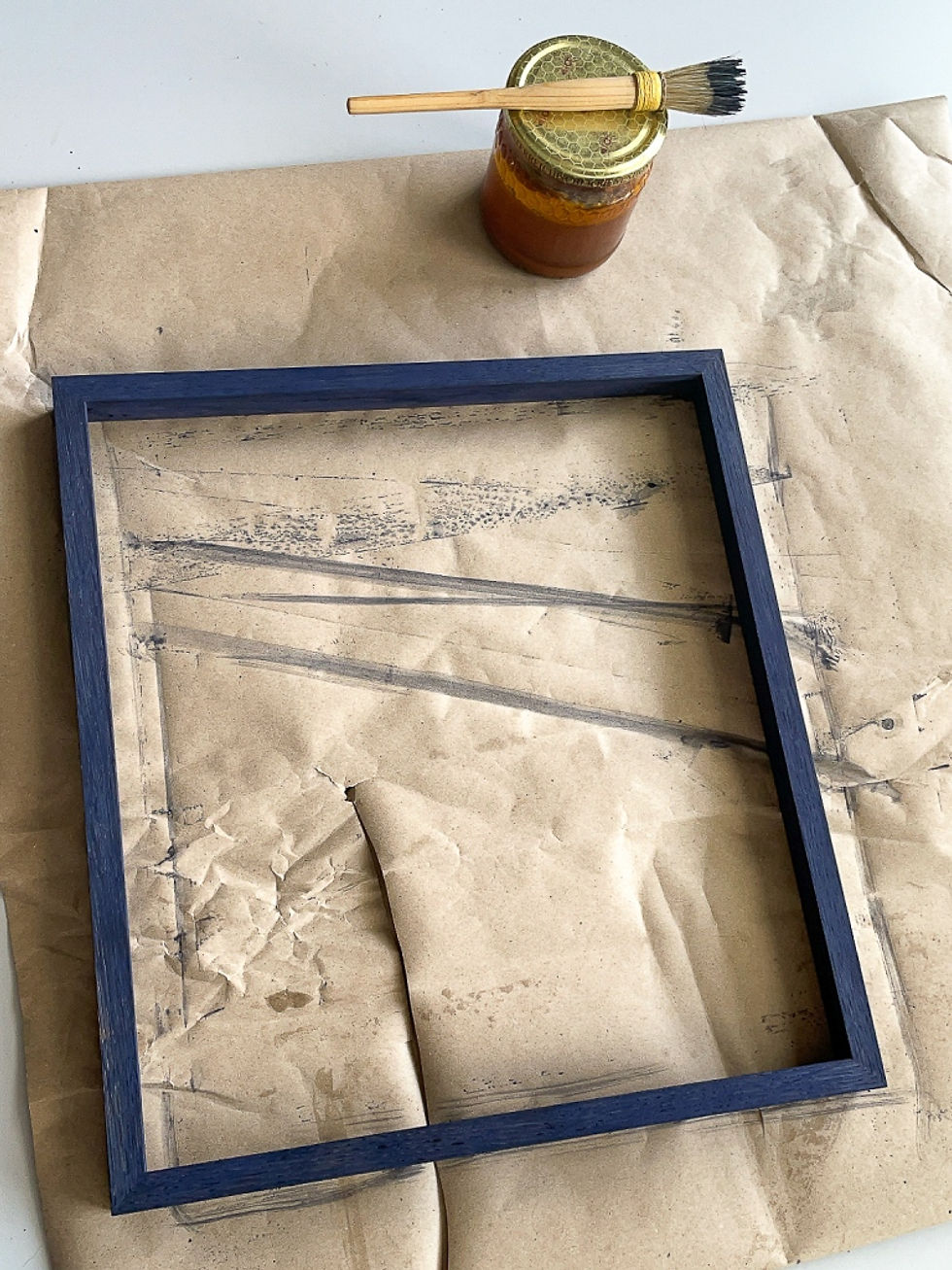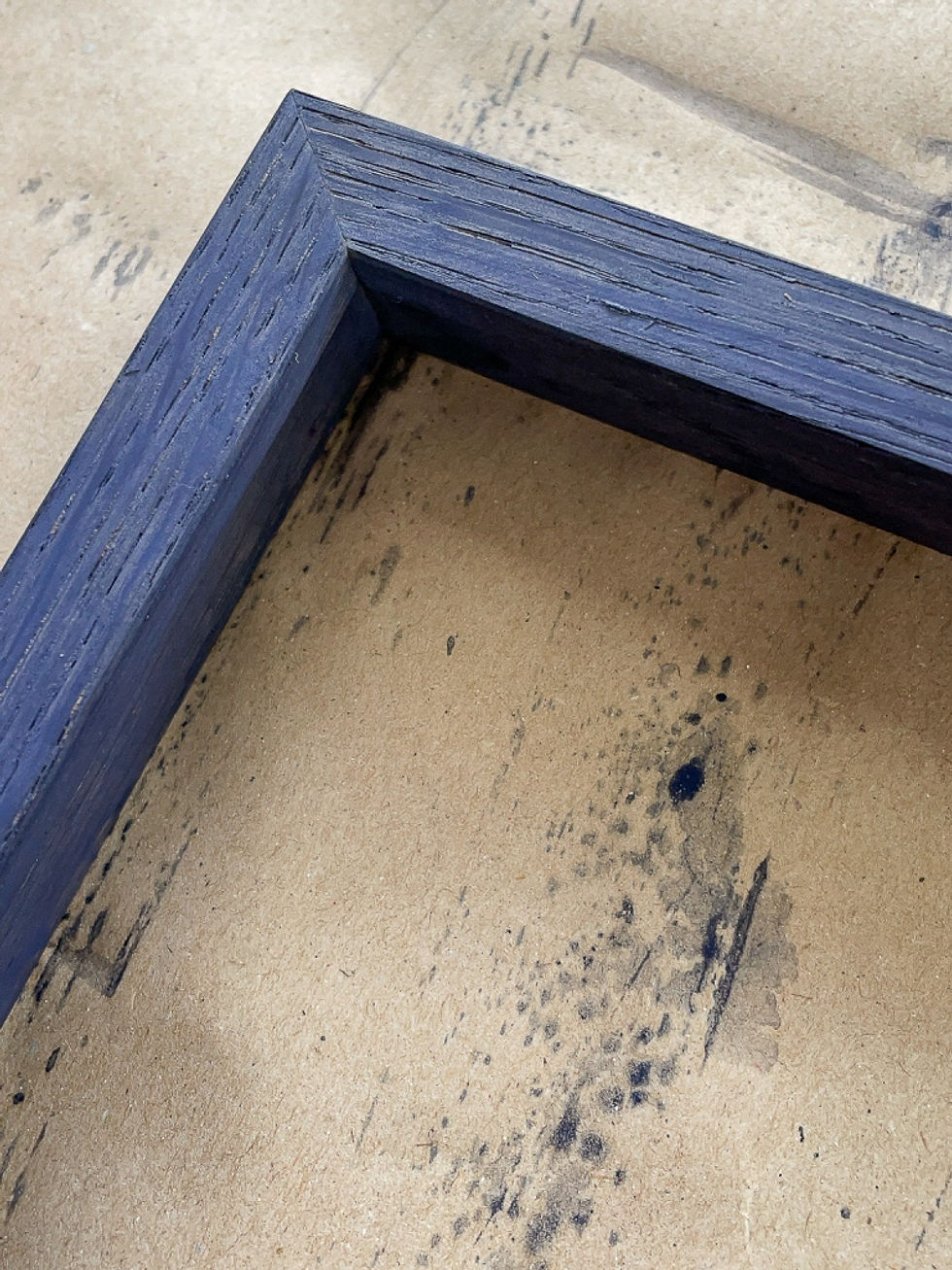iron mordant
- anjarlampert
- Nov 4, 2022
- 3 min read
iron mordant or iron water, or more precisely iron(II) acetate, is a very versatile and easy to make substance to use in dyeing and woodworking. it reacts with tannin-rich wood and turns it darker. for fabric and thread dyeing it turns dyes into a greenish direction or makes dyes darker and more dull. with some dyes, like avocado, it creates a different colour even. it’s a pretty fascinating and useful thing to have.
here’s how to make your own iron mordant: you need: – some scrap iron (rusty nails, steel wire, washers, etc…); i often pick up small rusty things whenever i find them, especially aras near construction sites often have little bits of rusty iron lying around. or when you’re out litter picking, keep anything rusty. steel wool works as well, if you can’t get hold of rusty stuff. – vinegar or vinegar essence – water – two glass jars put your rusty bits and pieces into the jar and cover with vinegar. if you work with vinegar essence, dilute first in order to get to a concetration of vinegar. follow the instruction on the bottle lable to do that; the vinegar essence we ususally have in supermarkets here needs to be diluted in a 1:4 ratio (1 part essence, 4 parts water).

cover with a lid, but don’t screw on tightly!!! the chemical reaction between acetic acid and rusty iron produces hydrogen. the amounts are small and safe to just dissolve in the air, but it needs to be able to escape the jar. a tight lid might have pressure adding up inside the jar and make it explode – you don’t want that!!! just remember – loose lid, and it’s a perfectly safe thing to make at home.
after one day, pour your solution into the second jar, leaving the rusty bits exposed to air; best to put no lid on. on the next day, pour your solution back on the rusty parts. alternate every day between having the rusty iron exposed to air and covered in liquid. the liquid should turn a lovely rusty colour quite soon, a sign that it’s ready to use.

if you use it for woodworking, it’s good to go directly from the jar. if you use it for mordanting textile fibers, you need to dilute it with water, in a ratio of 1:2 (1 part iron mordant solution, 2 parts water).
or, leave it as is and only add a small amount to your dye if you want to modify your dye. this works well with avocado. iron mordant turns the pink shades of avocado into a lovely purple. to do this, you would use your avocado dye process, take out your dyed fiber, add iron solution to your dye pot (you should see the colour change immediately), stir and add the dyed fiber back into the pot and let it sit until the colour looks like you want it to.
here is an example of iron mordant solution on oak wood (also notice the bristles of the brush; they are animal fiber and also react with the solution):

iron solution on an oak wood frame:

photo (c) harald oesterle

photo (c) harald oesterle
iron solution on oak wood frame (hand plained and brushed, treated with iron mordant solution, finished with danish oil; made by @orcoyoyo):

and here is an example of avocado dyed thread and fabric, the pink ones are avocado only, the purple ones were modified with iron(II) acetate:

there are so many more variations with different plant dyes and iron mordant solution, and i’ll keep exploring and experimenting.
Comments